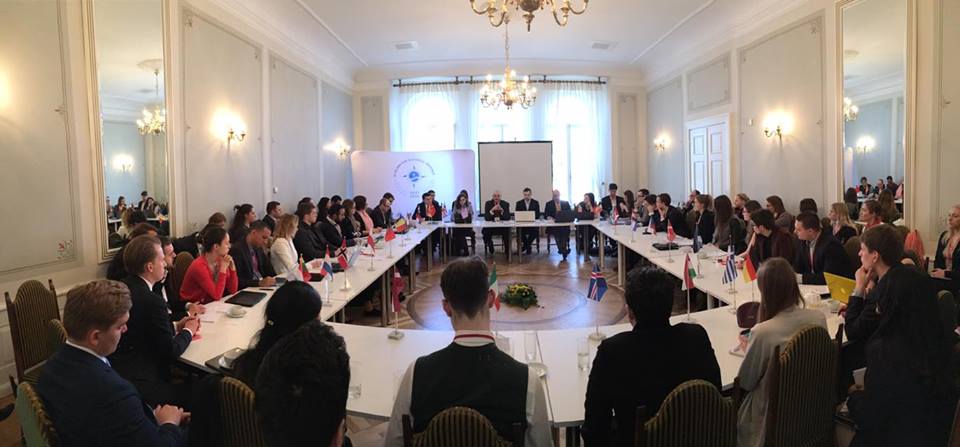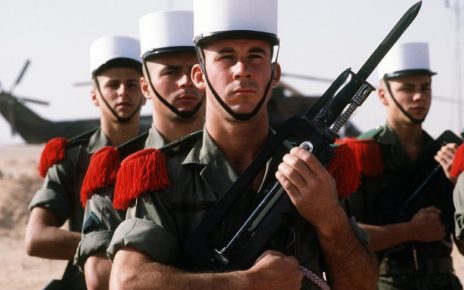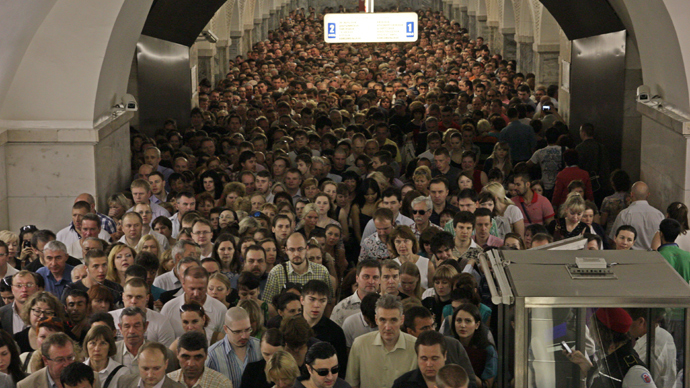Addressing Threats on NATO’s Eastern and Southern flank
On March 31, 2016, Honourable Marina Kaljurand, Estonian Minister of Foreign Affairs, gave the welcome address at the fourth international NATO and EU Roundtable. Her speech touched on the challenges facing the European Union, especially focusing on the refugee crisis. Minister Kaljurand stressed that to face misinformation linking refugees with terrorism, we should always speak up as conscientious members of the global community.
Following Minister Kaljurand’s welcoming address, Dr. Gerlinde Niehus, Head of the Engagements Section of NATO’s Public Diplomacy Division, introduced the first panel: a discussion of Europe’s increasingly complex and unpredictable security environment. Facing a more unstable world order, NATO must deal with a more assertive Russia on its Eastern flank and extremism, violence, and refugee flows on its Southern flank.
Dr. Niehus stated that modernizing NATO’s defensive posture is the key priority between now and the Warsaw Summit. Because the funding necessary to maintain large armies and deployments is simply not there right now, NATO forces need to be nimble enough to move quickly to where they are needed. An important concept was forward presence, the stationing of forces overseas to demonstrate resolve. A balance needs to be struck between forward presence and speed. Additionally, she mentioned that heightened defence cooperation with Sweden and Finland would be welcome. In today’s security environment, there can be no return to ‘business as usual.’ NATO must maintain strategic continuity, staying true to its core tasks of collective defence and deterrence, cooperative security, and crisis management.
Alastair Brockbank, Political Officer of the Embassy of the United Kingdom, addressed the audience next. Brockbank noted that, at 100 days before the Warsaw Summit, we need to focus on what exactly ‘credible defence’ looks like. Factors to consider include civil preparedness, political readiness, intelligence sharing, and more integrated strategic communications. Similarly, Commander Kurt Engelen, Permanent Representative of Belgium to the NATO Military Committee, emphasized that ‘security is indivisible’ when it comes to regarding NATO’s threats on its Southern and Eastern flanks. Countries such as Ukraine, Georgia, and Moldova that are facing hybrid warfare should answer with a ‘hybrid strategy.’ The concept of anti-access/area-denial (A2AD) requires the adoption of full-spectrum instruments. The three pillars involved are readiness, responsiveness, and ground capabilities. The Warsaw Summit will likely see deliverables such as an increase in the presence of forces in Europe as well as a package offered to Ukraine in order to promote defence reform and capacity building.
Next, Professor Julian Lindley-French, Vice-President of the Atlantic Treaty Association, spoke on the Brexit, which he called ‘the elephant in the room.’ As Prof. Lindley-French told the audience, ‘I was standing on the Russian border in Lithuania a few weeks ago and it struck me that it would be utterly wrong for us to enter into the debate as Europeans to re-negotiate the role of a major power in the EU at this moment.’ For instance, there are 120,000 Russian troops at 4 days ready to move. The NATO’s Spearhead Force stands at only 5,000 troops, requiring 5-7 days to move. The Enhanced NATO Force consists of 50,000 troops at 30-55 days to move. Regarding capabilities, Lindley-French mentioned that NATO has shifted too far away from worst-case analysis and planning and has succumbed to an ‘optimistic psychosis.’ According to Lindley-French, ‘NATO and the EU, as the guarantor of a resilient society, must be built together with Britain at its core.’
Tackling the Challenges of Hybrid Warfare
According to James Sherr, Chatham House Associate Fellow, what we call hybrid warfare is our attempt to come to terms with a Russian tradition of fighting irregular wars that goes back 400 years. Russia’s goal is to achieve strategic objectives before the country concerned has even registered that war has begun, making sure to stay below NATO’s reaction threshold. In order to guard against hybrid warfare, there needs to be trust between society and the state, professional state institutions, financial regulation, and political oversight. It is imperative that the Alliance come to understand the Russian definition of winning and losing as well as the importance of deterrence.
Col. Aivar Jaeski, Deputy Director of the NATO Strategic Communication Centre of Excellence, took the stage next, speaking about informational confrontation between Russia and the West. As he described it, narratives are spun by the Russian media, information is leaked strategically, and economic pressure is applied. The term ‘Schroederization’ already exists to address how key leaders in the West can be co-opted. For instance, Gerhard Schröder, former Chancellor of Germany, joined the board of Russian energy company Gazprom and defended Russia’s actions in Ukraine. According to Col. Jaeski, investing in education to inform the public is a key factor in guarding against disinformation campaigns.
Dr. András Rácz, Senior Research Fellow at the Finnish Institute of International Affairs, recommended the term full-spectrum warfare rather than hybrid warfare because it is more precise. Though non-military aspects such as diplomacy, economic coercion, energy, and information operations, have all been an aspect of hybrid warfare or full-spectrum warfare, Russia’s economy is in such poor shape that economic coercion might not be possible. Rácz left the audience with three pieces of advice: i) voice your opinions; ii) do not become corrupt; iii) know your enemy. To end the second panel, Henry Rõigas, analyst at the NATO Cooperative Cyber Defence Center of Excellence, addressed the cyber aspects of hybrid warfare. According to Roigas, cyberwarfare is an effective tool because attribution is next to impossible.
A New Global Strategy for the EU’s Foreign and Security Policy
The last and final panel addressed the details of a new global strategy for the European Union’s Foreign and Security Policy. In the words of Erika Ellamaa-Ots, EU analyst from the Estonian Ministry of Foreign Affairs, “a strategy is not a list of threats, it’s more an understanding of the EU’s role in the world.” Similarly, Commander Hans Huygens, Allied Command Operations Strategy Defence Policy Division Chief, cites a Japanese technique called ‘kaizen.’ Kaizen endorses incremental steps leading up to a larger leap in the sense of a paradigm shift.
Commander Huygens states that there are five priorities in the EU’s global strategy: EU member states’ security and resilience; resilience of the surrounding regions; an Integrated approach; investment in a regional security approach but with a 360 degree view; and strengthening global governance through UN reforms. According to Emmet Tuohy, Senior Research Fellow from the Estonian Centre for Eastern Partnership, key questions facing the EU’s Eastern Partnership strategy include: do we focus more on countries close to home? How do we deal with the Bear in the room? How can we resolve tension between realism and idealism? Citing American diplomat Victoria Nuland, soft power is not enough; the frozen conflicts have to end.
In closing, the event was engaging and well-organized. The audience was able to hear from a wide variety of experts on topics varying from the Warsaw Summit to EU Foreign and Security Policy. The question and answer periods engendered lively debate among the audience members and the panelists alike. Just 100 days before the Warsaw Summit, such exchanges are crucial in stoking discussion on the future of the Alliance.
The NATO Association of Canada would like to thank the Estonian Atlantic Treaty Association, who organized the event in collaboration with NATO Headquarters, the Ministry of Foreign Affairs of Estonia, Estonian Foreign Policy Institute, the Friedrich Ebert Stiftung, British Embassy, and the NATO Cooperative Cyber Defence Centre of Excellence.
Photo credit to the Estonian Atlantic Treaty Association (EATA)




